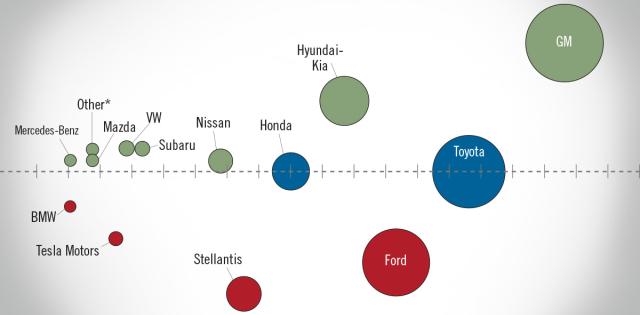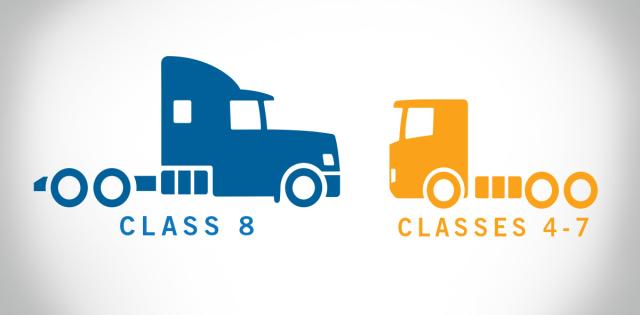TYSONS, Va. – The National Automobile Dealers Association, a trade group representing U.S. franchised new-car dealerships, today released its annual sales forecast for new light vehicles in 2019.
“We’re forecasting sales of 16.8 million new cars and light trucks in 2019,” said Patrick Manzi, NADA senior economist, at an industry briefing. “This would represent a falloff in sales of about 1.1 percent compared to 2018.”
Based on a strong November, new-vehicle sales are expected to reach 17 million units in 2018, which would mark the fourth straight year of U.S. auto sales above 17 million units.
“This was unexpected. We were expecting sales to fall off a little more than they have this year, but then the new tax law was passed which put more money in the pockets of consumers and they certainly purchased new vehicles at dealer showrooms,” Manzi added. “The majority of these sales, following the trend of past years, have been light trucks, such as crossovers, pickups and SUVs.”
NADA Chairman Wes Lutz, president of Extreme Dodge-Chrysler-Jeep-Ram in Jackson, Mich., who provided a dealer perspective on the state of auto retailing during the briefing, added that sales of 16.8 million new vehicles would still be a robust year in 2019 but was concerned about “price creeping” that could take some consumers out the market.
“If incentives continue to go down and interest rates go up, it will put tremendous pressure on consumers with rising monthly payments,” Lutz added. “The level of interest rates moving forward will be a wildcard.”
In 2018, consumers continued to abandon car segments. Light trucks are on track to account for about 70 percent of sales, while cars will account for nearly 30 percent of sales. In 2017, the ratio was 64.5 percent light trucks and 35.5 percent cars. About 10 years ago, the sales mix consisted of 48 percent light trucks and 52 percent cars.
“One of the main factors for this shift has been continued low oil and gasoline prices and the fact that crossover utility vehicles are nearly as fuel efficient as their sedan counterparts. And we’ve seen fuel economy increases across the board, not just on crossovers but also traditional SUVs and pickups,” Manzi said. “We also expect gasoline prices to remain relatively low in 2019, not as low as present but still low enough not to cause a panic and a consumer shift back to the car market.”
Incentive spending, on average, per unit was down in November 2018 compared to the same month a year ago, according to industry sources.
“We’ve seen more discipline from auto manufacturers with their production this year. They have properly aligned production with demand and as a result have relied less on incentives, although some incentives applied on less popular segments may spike in December 2018 as well as fleet sales at the end of the year,” Manzi added. “We expect incentives to continue to fall and automakers to remain disciplined in 2019.”
Manzi, who agreed with Lutz, added that a significant headwind for consumers is rising interest rates for new-vehicle financing.
“Depending on what source you look at, average interest rates on new-vehicle financing have risen 60 to 70 basis points from 2017 through the third quarter of 2018. That has really driven up the cost of borrowing,” he said. “We expect interest rates to continue to rise. There has been some speculation that the frequency of rate increases may slow.”
The Federal Reserve Board is expected to raise rates at its meeting in December 2018. One or two more rate increases are likely during the early half of 2019 and then rates are expected to hold steady.
A positive trend for both consumers and new-car dealerships has been the growth in manufacturer-backed certified preowned (CPO) sales. CPO sales are up 2.2 percent through November 2018.
“The price gap in average monthly payments between new and used vehicles is widening. Consumers, even those with stellar credit, are doing the math and many will choose to buy used vehicles from new-car dealerships, which are uniquely positioned and qualified to sell CPO vehicles,” Manzi said. “Off-lease returns to dealerships are expected to peak in 2019 following record leasing in 2016. That means more CPO sales for franchised dealers.”
Lutz, who sells two used vehicles for every new model sold at his dealership, added that rising transaction prices in the new-vehicle market will result in more consumers shopping for used vehicles.
“There’s an abundance of late-model, off-lease vehicles returning to dealerships, which offers consumers an alternative to higher monthly payments on a new vehicle,” Lutz said.
Manzi also provided an outlook of the macroeconomic factors that will impact auto retailing in 2019.
“The tax cuts signed into law in 2018 provided a significant boost to the overall economy. It likely resulted in GDP growth of 3 percent for the year, pushed average employment growth up to 206,000 jobs per month and unemployment down below 4 percent, and increased new-vehicle sales,” he said. “We’re not going to have that again in 2019. That’s one of the main reasons we’re expecting new-vehicle sales to fall off slightly.”
NADA expects GDP growth of about 2.5 percent in 2019 and then a return to a long-term trend growth rate of about 2 percent or slightly lower.
“We expect the rate of job growth to slow to between 150,000 to 170,000 jobs per month,” Manzi said. “And there’s still more room for the unemployment rate to fall and wages to rise.”
Lutz added that new-car dealers are generally optimistic about 2019 and excited about changes in technology from advanced safety features, improved fuel economy and especially vehicle electrification.
“There are 270 million vehicles on the road today with gasoline combustion engines,” Lutz said. “New-car dealers would like to replace all of them.”










